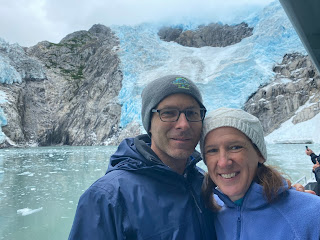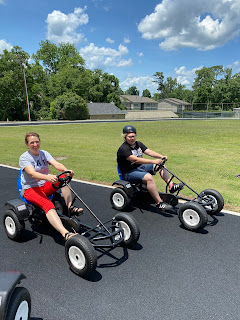Thursday, July 29, 2021
Use Your Talents to Serve Your Community
Thursday, July 22, 2021
Creativity in the Classroom
They say that doctors make the worst patients and teachers make the worst students, but I love to teach career teachers in Wesleyan College's Master's of Education program, and help them find ways to make their classrooms places where creativity thrives.
Friday, July 16, 2021
Shoestring Road Tripping 101
I just got back from a 20 state, 20 National Park family road trip in 24 days. All the odds were against us this summer: a record breaking heatwave, overcrowded parks, sky high gas prices, and a continuing global pandemic, but it was an unbelievable happy experience and we did it all without breaking the bank. Here are a few tips and take aways from my latest excursion.
 |
| A city park in North Little Rock |
 |
| Crater Lake is the only place this trip that felt crowded |
Be frugal! I figure if I spend half as much, I can double the length of the trip, or take twice as many trips. There's so much I want to see in this world! My kids are now old enough that they care about being healthy and choose to drink water at every meal. What we saved on restaurant soft drinks probably covered a night at a hotel, so cut costs where you won't miss them. Don't get to he point where you feel deprived, but put your money where you'll enjoy it most.
 |
For this trip, we spent 7 nights in the homes of family and friends (free), 8 nights camping (very inexpensive), and 8 nights in hotels (not too pricey). Seeing friends and family are part of the reason we travel. All five of my siblings live in different states and it was a real treat to get to see the homes of three of my sisters for the first time. (We usually meet up somewhere for reunions.) Camping can cost as little $15-$20 at places where nearby cabins and hotels run $300+ a night. When we splurged for hotels, it would usually be far enough outside a popular destination to be reasonably priced.

Plan layovers. It helps to have two nights at one place, every few days, for the luxury of not having to pack up every single morning, and so that people can have a place to regroup/ hang low between activities or while others go out. We did three long driving days, then break day, two long days, then break day. The break days can be just as rigorous if you want them to be: we did a lot of sight seeing between our two nights in San Fransisco, but we did manage to fit a cat nap in the afternoon because we had a place to rest. I like to use cities as our "lay-over" days. If you can stay someplace down town, then you can walk to the sights and save the headache of parking.
Expect things to go wrong. On weekend college get aways, my friends and I would say, "It's not a real road trip unless the car breaks down." We usually said this as we were waiting for a tow truck, but knowing ahead of time that there will probably be bad weather, heavy traffic, sickness, closed museums, or reservation mix-ups will help you deal with less than perfect conditions when they arrive. Keep a sense of humor and know that it is just par for the course.
Saturday, July 10, 2021
Summer Program for Visually Impaired
 |
| My visually impaired students touching a turtle at a petting zoo |
We had field trips to a rock wall and to a Macon Bacon baseball game with all you can eat food. It has been such a hard school year with COVID hanging over every day and every activity. The summer program was like breathing fresh air again with getting back to normal life.
Academy for Fine Arts Center at Wesleyan College: Summer Camp
 We went out for Indian food before going to a really impressive theatre performance of Once on this Island! Everyone had a great time and learned a lot. Being the Assistant Director of the Center for Fine Arts Academy is a lot of work, but it is rewarding work.
We went out for Indian food before going to a really impressive theatre performance of Once on this Island! Everyone had a great time and learned a lot. Being the Assistant Director of the Center for Fine Arts Academy is a lot of work, but it is rewarding work.





























